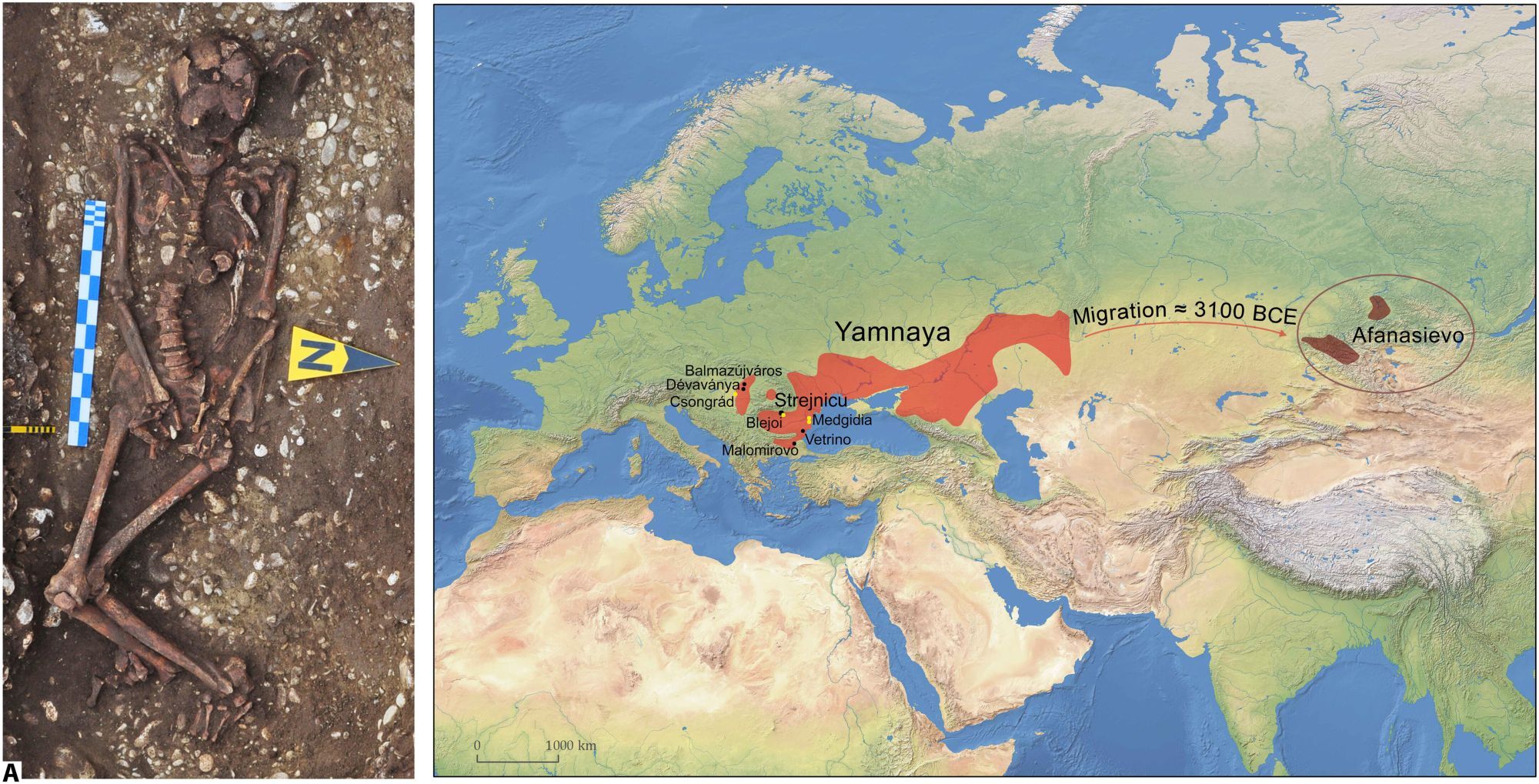We are featured in a new international genomic study that provides fresh insights into the linguistic roots of humanity.
A groundbreaking study, published in Nature on 5 February, analyses the archaeogenetic data of 435 individuals from across Eurasia (6400–2000 BCE). It highlights the significance of prehistoric populations from the Caucasus–Lower Volga region, newly identified as a distinct genetic group. The findings suggest that this population may have been connected to all Indo-European-speaking communities and played a key role in the formation of the Indo-European language family.
Key findings of the study:
🔹 Three pre-Bronze Age genetic gradients identified in Eastern Europe and the Caucasus:
- Caucasus–Lower Volga Gradient: This genetic gradient was predominantly shaped by the legacy of Caucasus hunter-gatherer populations. It extended from the Caucasus region to the Berezhnovka site along the Lower Volga. Two-way gene flow created transitional populations, including those of the North Caucasian Maykop culture and the Remontnoye site on the Pontic-Caspian steppe. The genetic heritage of prehistoric Caucasus–Lower Volga populations is closely linked to the later Jamnaya culture, which is associated with the spread of Indo-European languages. Previously enigmatic Anatolian language speakers, including the Hittites, also show genetic connections to this newly identified Caucasus–Lower Volga population.
- Volga Gradient: This genetic gradient emerged from the admixture of Caucasus–Lower Volga populations with Upper Volga hunter-gatherer groups of Eastern European origin, leading to highly diverse communities.
- Dnieper Gradient: This gradient formed along the Dnieper River through the admixture of westward-moving Caucasus–Lower Volga communities with Neolithic hunter-gatherer populations from the northern Black Sea coast. Archaeologically, this population is linked to the Seredny Stih culture. Genetic data suggest that they directly contributed to the formation of the core population of the later Jamnaya archaeological phenomenon around 4000 BCE. Between 3750 and 3350 BCE, this population experienced rapid demographic growth and began expanding due to favourable climatic and environmental conditions.
 The expansion of the Yamnaya phenomenon in Eurasia at the turn of the 4th/3rd millennium BCE. Trautmann et al. 2023
The expansion of the Yamnaya phenomenon in Eurasia at the turn of the 4th/3rd millennium BCE. Trautmann et al. 2023
🔹 Impact of Jamnaya Expansion: Around 3100 BCE, the Jamnaya expansion fundamentally reshaped the genetic composition of European and Central Asian populations.
🔹 The Role of Data from the Carpathian Basin: Genetic analyses of Jamnaya-type burials from Hungary confirm connections to eastern populations at the turn of the 4th and 3rd millennia BCE, helping to map migration routes. Additionally, a newly identified Copper Age individual from Csongrád-Kettőshalom (dated to 4330–4075 BCE) provides direct evidence of a Volga-region connection predating the Jamnaya expansion by a millennium.
The research was led by Iosif Lazaridis, Nick Patterson, and David Reich (Harvard University, Howard Hughes Medical Institute), Ron Pinhasi (University of Vienna, HEAS), David Anthony (Hartwick College), and Leonid Vyazov (University of Ostrava), with contributions from 128 co-authors.
Genetic analyses of Hungarian samples were conducted in part at the HUN-REN RCH Institute of Archaeology and later at the Institute of Archaeogenomics, contributing to key findings of the study.
📌 Read the study here
📩 Further information:
Szécsényi-Nagy Anna –



